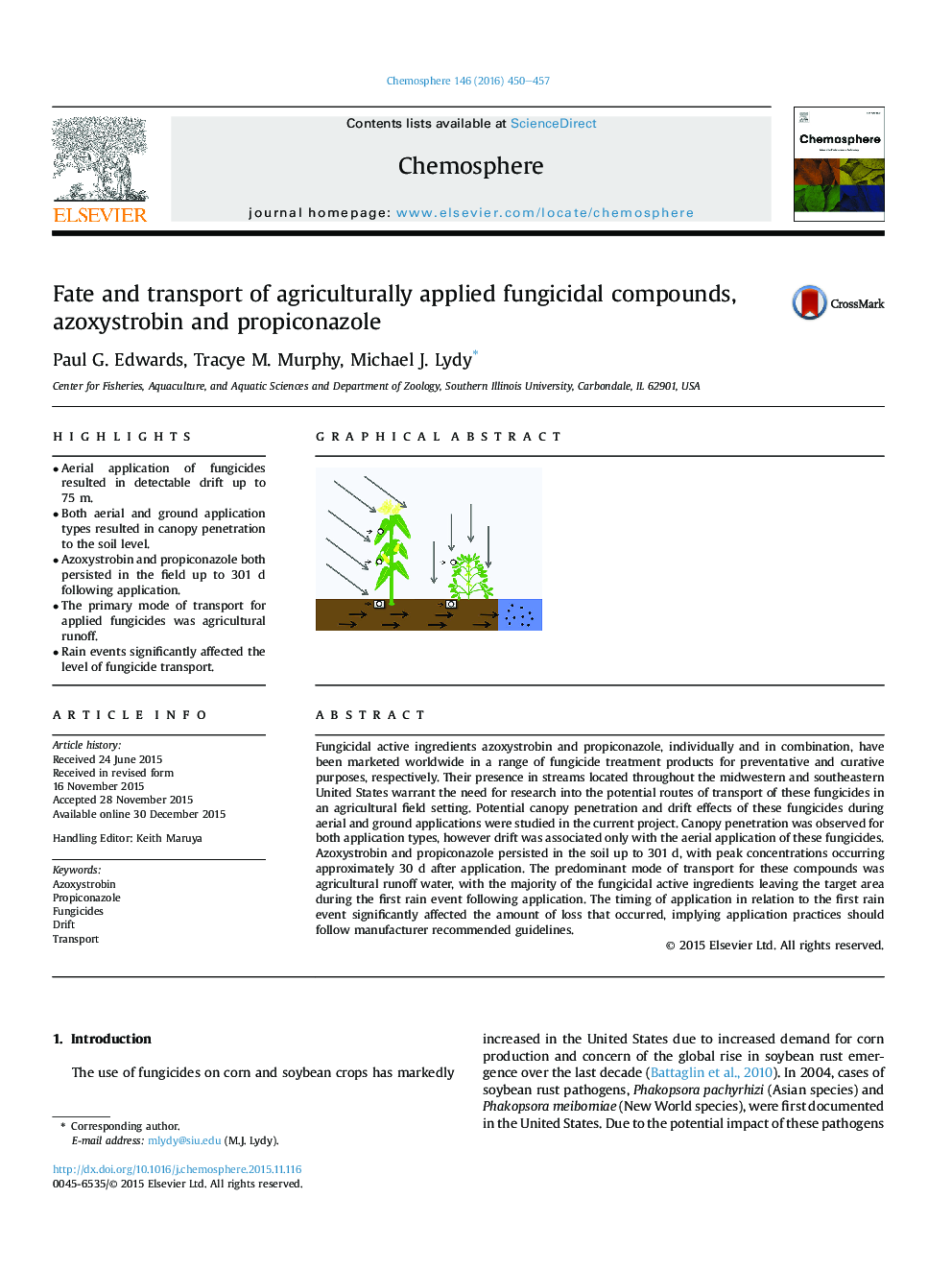| Article ID | Journal | Published Year | Pages | File Type |
|---|---|---|---|---|
| 4407964 | Chemosphere | 2016 | 8 Pages |
•Aerial application of fungicides resulted in detectable drift up to 75 m.•Both aerial and ground application types resulted in canopy penetration to the soil level.•Azoxystrobin and propiconazole both persisted in the field up to 301 d following application.•The primary mode of transport for applied fungicides was agricultural runoff.•Rain events significantly affected the level of fungicide transport.
Fungicidal active ingredients azoxystrobin and propiconazole, individually and in combination, have been marketed worldwide in a range of fungicide treatment products for preventative and curative purposes, respectively. Their presence in streams located throughout the midwestern and southeastern United States warrant the need for research into the potential routes of transport of these fungicides in an agricultural field setting. Potential canopy penetration and drift effects of these fungicides during aerial and ground applications were studied in the current project. Canopy penetration was observed for both application types, however drift was associated only with the aerial application of these fungicides. Azoxystrobin and propiconazole persisted in the soil up to 301 d, with peak concentrations occurring approximately 30 d after application. The predominant mode of transport for these compounds was agricultural runoff water, with the majority of the fungicidal active ingredients leaving the target area during the first rain event following application. The timing of application in relation to the first rain event significantly affected the amount of loss that occurred, implying application practices should follow manufacturer recommended guidelines.
Graphical abstractFigure optionsDownload full-size imageDownload as PowerPoint slide
